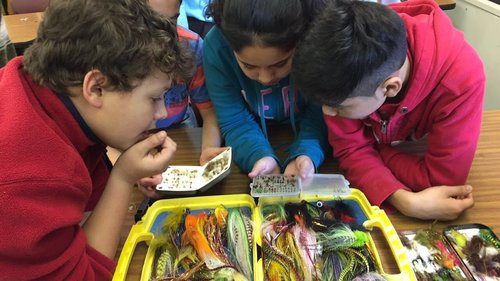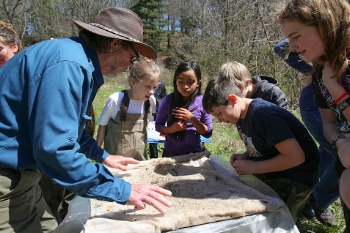

Learning about Amphibians & Aquatic Insects
BRDC has been busy with education programs, working with Galax Middle School, Fries School, Fairview Elementary, Grayson Highlands, Independence Elementary.
Grayson County's fourth grade students participated in the Natural Heritage Program with an emphasis on salamanders, toads, and frogs. Students learned about salamanders commonly found in the Blue Ridge.

BRDC Partners with Grayson County Schools
We are pleased to announce our partnership with Grayson County Public Schools to connect local youth to the Blue Ridge through hands-on programs with students, providing grade specific SOL’s and STEM learning concepts. The $10,000 award from Grayson County Schools for the 2016-17 school year, supported by matching funds and volunteer support from BRDC, will reach students across the school system and enrich the public school experience through hands-on and interest-driven activities.

Mt. Rogers Naturalist Rally Biological Survey
As part of the Mt. Rogers Naturalist Rally this spring, participants joined BRDC guide Devin Floyd for a biological survey of the rich forest at Grindstone Campground.

Students conduct first survey of Deer Exclosure Plot
For our first research day, 9/9/15, the students focused on describing the forest floor and canopy densities, comparing percentages of herbaceous and rocky or barren coverage, taking a census of all the trees within an approximately 80 foot radius of the deer exclosure including diameter, height and species of each tree.

Bio Survey, Matthew's State Forest, March 30th, 2015
At long last, the Southwest Virginia Home Educators returned for another fun-filled day of exploration and discovery at the Matthews State Forest. Twelve children of a wide age range and four moms joined Evan Worrell and me (Scott Jackson-Ricketts), BRDC guides, for a five hour plot investigation. We dedicated the morning to bird identification realizing quite a data set once the sun came out.